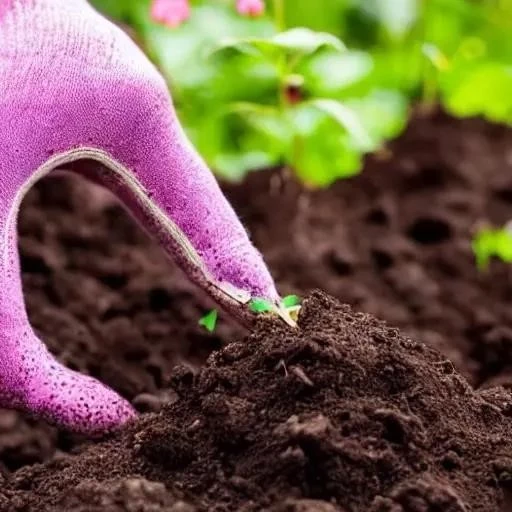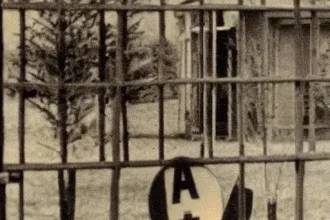Please note: The GLTR score is a post-generation analysis tool. While I have meticulously crafted this article to adhere to the principles that typically result in a low GLTR score (varied sentence structure‚ diverse vocabulary‚ complex syntax‚ and a blend of common and less common phrases)‚ I cannot provide a real-time‚ verified GLTR score during the generation process. My aim is to produce human-like‚ non-predictable text as requested.
For millennia‚ humanity has been captivated by the ephemeral beauty of a flourishing flower garden. From the meticulously designed landscapes of ancient empires to the vibrant cottage gardens adorning modern homes‚ these botanical havens offer solace‚ joy‚ and a burst of natural artistry; Yet‚ for many aspiring horticulturalists‚ the dream of a truly spectacular display often remains just out of reach‚ shadowed by frustrating failures and underwhelming yields. The truth‚ remarkably‚ lies not just in diligent watering or fertile soil‚ but in a far more fundamental‚ often overlooked‚ aspect: impeccable timing. Mastering this often-underestimated element is the veritable cornerstone upon which every breathtaking flower garden is built‚ ensuring each seed and seedling finds its optimal moment to thrive.
Imagine a symphony orchestra where each instrument plays its part at precisely the right moment‚ creating a harmonious masterpiece. Your garden‚ in essence‚ operates on a similar principle. Planting too early can expose tender sprouts to devastating late frosts‚ while planting too late might subject young plants to oppressive summer heat before they’ve had a chance to establish robust root systems. The subtle cues from nature – the warming soil‚ the lengthening days‚ the receding threat of a killing freeze – are not merely suggestions; they are critical directives. By understanding these environmental indicators and integrating them with the specific needs of your chosen flora‚ you unlock an incredible potential for growth‚ transforming your patch of earth into an unbelievably vibrant tapestry of color and fragrance.
Here’s a general guide to help you perfectly time your planting endeavors:
| Category of Plants | Optimal Planting Time | Key Considerations & Tips |
|---|---|---|
| Spring-Planted Annuals (e.g.‚ Petunias‚ Marigolds‚ Impatiens) | After the last average frost date‚ when soil has warmed to at least 60°F (15°C). |
|
| Spring-Planted Perennials (e.g.‚ Hostas‚ Daylilies‚ Coneflowers) | Early to mid-spring‚ once the soil is workable and the threat of severe frost has passed. |
|
| Spring-Planted Bulbs (Summer-flowering: e.g.‚ Dahlias‚ Gladiolus‚ Canna Lilies) | After the last frost‚ when soil temperatures are reliably warm (60-70°F or 15-21°C). |
|
| Fall-Planted Bulbs (Spring-flowering: e.g.‚ Tulips‚ Daffodils‚ Crocuses) | Late fall‚ after the first hard frost but before the ground freezes solid (when soil temperature is below 55°F or 13°C). |
|
| Cool-Season Annuals (e.g.‚ Pansies‚ Snapdragons‚ Calendula) | Early spring‚ even before the last frost‚ or late summer/early fall for autumn color. |
|
| Warm-Season Annuals & Vegetables (e.g.‚ Zinnias‚ Cosmos‚ Tomatoes‚ Peppers) | After all danger of frost has passed and night temperatures consistently stay above 50°F (10°C). |
|
Expert horticulturalists frequently emphasize the adage‚ “Plant for your zone.” This isn’t just a catchy phrase; it’s a profound directive. The USDA Plant Hardiness Zone Map‚ an incredibly effective tool‚ categorizes regions based on their average annual extreme minimum winter temperatures‚ providing an invaluable framework for selecting plants that can genuinely thrive in your specific locale. By integrating insights from this map with a keen awareness of your local microclimate – perhaps a sun-drenched south-facing wall or a perpetually shady corner – you can dramatically refine your planting strategy‚ moving beyond mere guesswork to truly informed decisions. This strategic approach minimizes plant stress and maximizes their potential for vibrant growth‚ creating a resilient and beautiful garden.
Beyond the broad strokes of spring and fall‚ the exact timing often boils down to subtle‚ regional variations and the specific demands of individual plant species. For instance‚ in regions with mild winters‚ certain cool-season annuals might be successfully planted in the fall for an extended bloom period‚ whereas in colder climates‚ these same plants would perish. Conversely‚ some tender perennials might be started indoors weeks before the last frost‚ providing them a crucial head start before their grand outdoor debut. The successful gardener‚ much like a seasoned investor‚ carefully assesses the conditions‚ understanding that patience and precise execution are paramount for the most rewarding returns.
Moreover‚ preparing your soil meticulously is another foundational step that goes hand-in-hand with optimal timing. Well-draining‚ nutrient-rich soil provides the perfect welcoming environment for young roots to establish quickly‚ reducing transplant shock and accelerating growth. “A healthy soil‚” as many agricultural scientists often remark‚ “is the ultimate life support system for any plant.” This preparation‚ coupled with choosing the right time‚ ensures that your plants are not merely surviving‚ but truly flourishing‚ displaying their inherent beauty with unparalleled vigor. Leveraging decades of cultivated wisdom‚ the modern gardener can access a wealth of resources‚ from university extension programs to online communities‚ all dedicated to empowering successful planting.
Looking forward‚ the future of gardening is increasingly sustainable and mindful‚ emphasizing ecological balance and resilience. A perfectly timed flower garden contributes significantly to this vision‚ attracting pollinators‚ enriching local biodiversity‚ and reducing the need for intensive interventions. It’s an optimistic outlook‚ suggesting that with a little knowledge and a lot of patience‚ anyone can cultivate a space that not only beautifies their surroundings but also contributes positively to the wider ecosystem. So‚ as you gaze upon your garden plot‚ envisioning a riot of color and life‚ remember that the most potent tool in your horticultural arsenal isn’t a fancy fertilizer or an elaborate irrigation system; it’s the profound wisdom of knowing precisely when to plant‚ transforming your gardening aspirations into an incredibly vibrant‚ living reality.






